A fellow
KVPUGer, peterscm, has completed the stand-alone conversion of the
Asian Food Calorie database.
Now with a PalmOS (sorry no PPC version!) PDA, you can carry with you and calculate how much calories, cholesterol, Na+, fibre etc you've ingested after pigging out on that Asian meal. I think this is a useful resource since there are precious few databases on Asian food nutrional values.
Here are some screenshots:
The splashscreen:
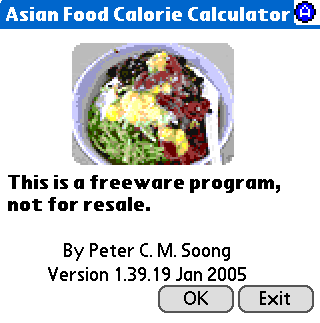
Food items are selected either from the drop down list or by keying in the name of the food at the bottom and the program will jump to the food item:
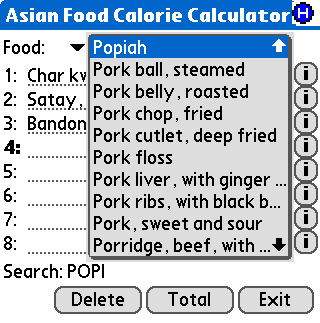
For each item, you can input several amounts of each item (translation: say you pigged out and ate 20 sticks of satay instead of 4):
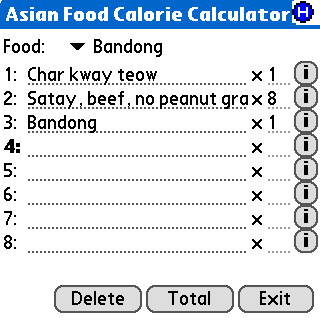
You can view the damage for each item:
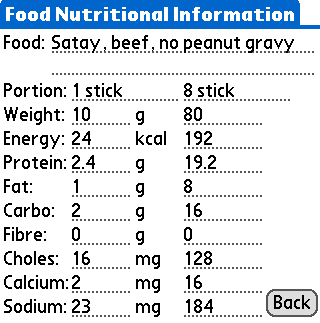
And here's the best part, peterscm has included a Total function and you can export all of these values to Palm's Memo:
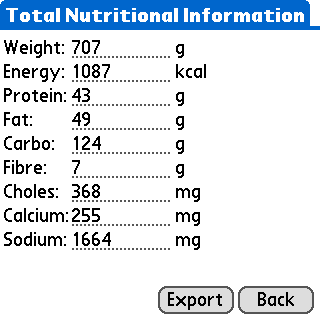
Where to get this program? It's not yet released so stay tuned. If you are interested, please leave a comment here or email me.



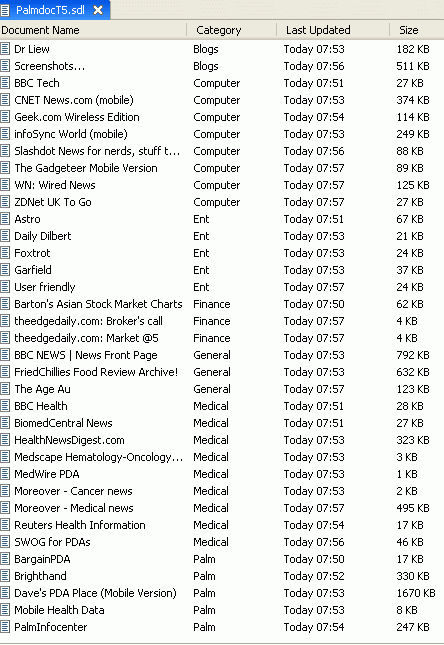




 Medical calculator for adult ICU that uses 85 medical equations, including pulmonary, cardiology, BNP CHF nomogram, pharmacokinetic dosing, renal, electrolyte, chemistry, nutrition, TPN, perioperative risk, biostatistics, acls, apache II, unit conversions, rules of thumb, and an RPN calculator with TVM.
Medical calculator for adult ICU that uses 85 medical equations, including pulmonary, cardiology, BNP CHF nomogram, pharmacokinetic dosing, renal, electrolyte, chemistry, nutrition, TPN, perioperative risk, biostatistics, acls, apache II, unit conversions, rules of thumb, and an RPN calculator with TVM.
 This value-priced package contains two trusted clinical drug books, Mosby's Drug Consult, a highly trusted and up to date drug source to provide accurate prescribing, and Mosby's Drug Interaction Analyzer, which includes interactions highlighted along with courses of action, recommendations, and exceptional conditions.
This value-priced package contains two trusted clinical drug books, Mosby's Drug Consult, a highly trusted and up to date drug source to provide accurate prescribing, and Mosby's Drug Interaction Analyzer, which includes interactions highlighted along with courses of action, recommendations, and exceptional conditions.
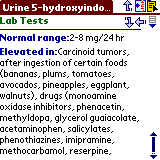 Ferri's Clinical Advisor 2005 provides the busy physician with a fast, efficient way to identify important clinical information about the most commonly encountered medical disorders. The PDA edition includes all diseases and disorders (615 common medical conditions), the complete differential diagnosis text (displays nearly every possible cause for 472 different signs and symptoms), a large selection of laboratory tests, Periodic Health Exam tables, and herbal product appendices—all in the palm of your hand.
Ferri's Clinical Advisor 2005 provides the busy physician with a fast, efficient way to identify important clinical information about the most commonly encountered medical disorders. The PDA edition includes all diseases and disorders (615 common medical conditions), the complete differential diagnosis text (displays nearly every possible cause for 472 different signs and symptoms), a large selection of laboratory tests, Periodic Health Exam tables, and herbal product appendices—all in the palm of your hand.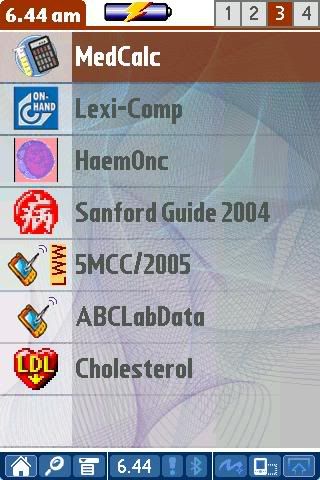
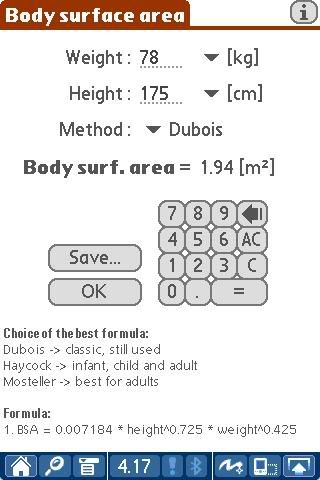
 Features:
Features: